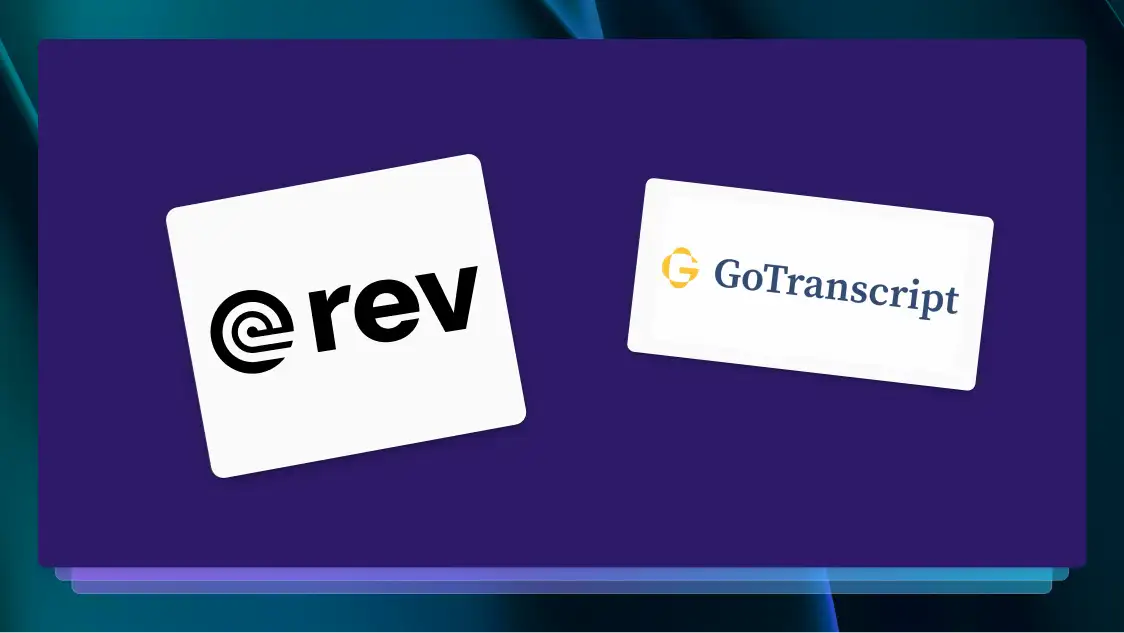Medical Transcription: What It Is & Why It’s Important
Discover the significance of medical transcription in healthcare. Click to learn its history, importance, and how to become one.

Medical professionals often have a busy day-to-day — between treating patients, counseling, and taking regular exams, they must also remember to keep and update patient records for maximum accuracy. Even though most hospitals and medical centers have switched to digital record keeping, it’s still fairly common for healthcare workers to use voice recordings to “take notes” in audio form.
But since you can’t use audio files in a patient’s medical record, these audio recordings have to be transformed into text somehow — this is where medical transcriptions come in.
What Is Medical Transcription?
Medical transcription is the process of transforming voice recordings created by healthcare professionals into text format, often as a means to speed up record keeping and remove the burden of physical note-taking from busy doctors and nurses (note: this is different from medical-legal transcription).
History
The process of transcribing medical voice notes has come a long way — but where did it begin?
Medical transcription dates back to the early 20th century, when healthcare professionals recognized the need for accurate documentation of patient records — these were typically handwritten. In the 1950s, though, magnetic tape recorders were introduced to the medical field, allowing healthcare professionals to speak their notes aloud rather than spend time writing them down.
This created the need for medical transcriptionists — dedicated individuals whose job it would be to translate audio recordings containing vital patient information into text form for the most accurate recordkeeping.
How It’s Done Today
As most things in the modern day, medical transcription today is done using advanced digital tools and software.
Typically, this involves healthcare professionals dictating information into voice recognition software or digital recording devices. These recordings are then transferred electronically to medical transcriptionists, who transcribe and edit the audio files into written text with the help of high-grade software.
Transcripts may need to be created in various formats depending on the field of medicine, as well as the intended use of the transcript. For example, a transcript of an exploratory abdominal surgery will likely look much different than a transcript of an ENT post-appointment diagnosis.
To increase efficiency even more, some medical transcriptionists run audio recordings through speech recognition technology, like an AI transcript generator, first to get a framework or draft of the transcript. This draft is then refined by hand to ensure accuracy.
There are also plenty of options out there for transcriptionists in the medical field looking to speed up the process even more. For example, Rev offers an audio recording app that allows users to order these “first draft” transcripts directly from their mobile devices, creating even more efficiency in the process.
The Future of Medical Transcription
As with many other industries, technological developments like artificial intelligence (AI) have and will continue to transform how transcription is done in the medical field:
- Image recognition technology will be able to identify elements in X-rays, medical charts, scans, and other medical imagery, allowing transcriptionists to reference data rather than human analysis.
- Sentiment analysis can be applied to medical dictations, giving transcriptionists a greater level of context when performing their work.
- Voice recognition software will make it even easier for doctors to dictate medical reports into software.
Now that you have an idea of the landscape of medical transcription, let’s explore its importance and the steps you can take to become one.
Why Medical Transcription Is Vital
Aside from helping healthcare professionals by quickening the process of taking notes about treatment plans, statuses, and other topics, medical transcription serves several other roles in the healthcare industry:
Accuracy of Medical Information
Medical transcription creates comprehensive and accurate documentation of patient encounters, including medical histories, diagnoses, treatments, and outcomes. This detailed record keeping is essential for a high standard of patient care, giving healthcare providers crucial information to make informed decisions, track patient progress, and communicate effectively with their support staff.
Patient Care Coordination
Between doctors, nurses, assistants, and more, one patient’s care team can have over 10 members. This means that having a breakdown in communication due to a lack of information can have serious impacts.
Transcribed medical records create coordination among healthcare teams, ensuring that all members have access to consistent and up-to-date information. And when patients record their doctor visits and transcribe them, they're able to better advocate for themselves and keep their medical history straight.
Accessibility and Retrieval
Transcribed medical records are stored electronically in records systems, making them easily accessible whenever needed. This enables quick and easy retrieval of information during consultations, emergencies, and follow-up visits, improving the efficiency of patient care.
Historical Record-Keeping
The same way that medical transcription provides the most up-to-date information when needed, it also preserves a historical record of patient encounters. This is particularly important for things like monitoring chronic conditions, tracking disease progression, and determining treatment effectiveness.
Without transcriptionists creating a vital bridge between healthcare providers and records systems, patient care would be slow, unorganized, and possibly even inaccurate. Medical transcription is a vital job that requires a honed skill set and great attention to detail.
How to Become a Medical Transcriptionist
Looking to make an impact by becoming a medical transcriptionist? Here’s a brief rundown of the things you need to know, what to consider, and the skills you’ll need to learn to maximize your impact on the medical field.
Education and Training
A high school diploma or GED is the minimum requirement to begin working towards certification to become a medical transcriptionist. The certification process typically results in an associate degree with a specialization in medical transcription.
This type of certification takes around two years to complete, and consists of transcription courses, as well as medical terminology and anatomy.
After certification, there are several ways to undergo the training necessary to become a medical transcriptionist: in-person courses, online courses, internships, and supervised on-the-job training.
Skills Needed for Medical Transcription
Because medicine is a heavily scientific and highly technical field, medical transcriptionists are required to ensure that all of the information in the audio recording is gathered and written down, while also needing an in-depth understanding of medicine in order to spell terms correctly and add context to transcripts.
Some of the skills required for medical transcription include:
- Medical knowledge: A solid understanding of medical terminology, procedures, medications, and conditions is necessary for accuracy in medical transcription.
- Typing skills: Strong typing skills allow transcriptionists to maintain productivity and meet deadlines while ensuring accuracy and completeness.
- Computer and technical skills: Proficiency in using computer software and transcription tools is vital for navigating electronic health records (EHRs), speech recognition software, and other programs.
- Attention to detail: This is key for identifying and correcting transcription errors, and ensuring accuracy in medical terminology, spelling, punctuation, and formatting.
Average Salary
The average hourly wage for a medical transcriptionist is $19.45, according to Indeed. That comes out to a yearly salary of around $40,500, assuming 52 40-hour work weeks.
However, the average salary for medical transcriptionists varies based on several factors: your years of experience, the specific type of medical transcription you specialize in, your location, and many others.
Other Transcription Jobs
If you’re interested in transcription, but not set on becoming a medical transcriptionist specifically, there are plenty of freelance and full-time opportunities for other types of transcription.
Other roles that involve transcription (but not specifically in the medical field) include:
- Court reporters, law enforcement, and legal transcriptionists: All three of these positions work to transcribe a variety of legal documents within the judicial system.
- General transcriptionist: Online service providers like Rev, have teams of 75,000+ Revvers who transcribe, caption, and subtitle videos and audio recordings remotely from all over the world.
- Corporate transcription: Large corporations run dozens of meetings each day — the role of a corporate transcriptionist is to transcribe press conferences, analyst reports, annual meetings, earnings reports, and other operational data.
- Captioners: Captioners listen to audio and create written captions to overlay on top of videos, either in open caption or burned-in formats.
Medical Transcription: A Crucial Asset to Healthcare Professionals
Whether you’re interested in becoming a medical transcriptionist, simply looking for more information on this important role, or looking for ways to practice your transcription skills, we’ve got you covered.
Rev offers tools and solutions that help medical transcriptionists, those training to become transcriptionists, or those looking for opportunities to build their typing and attention to detail skills. Click below to explore our services.















